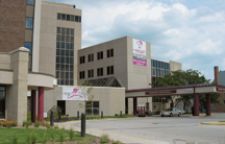
LaPorte Hospital and Health Services achieves its patient safety goals, in part, through aggressive IT implementation.
Good technology strategies have served LaPorte Hospital and Health Services well, and continue to provide a backbone for the hospital’s national reputation for quality.
Designated a Magnet hospital in 2004, LaPorte ranks 126 in the nation and second in the state of Indiana. Magnet hospitals are nationally recognized for excellence in nurse management and improving the quality of patient care — for LaPorte it’s a distinction that complements the organization’s other awards, including the recent VHA Leadership Award for Operational Excellence and U.S. News and World Report’s “Top 50 Best Hospitals for Respiratory Disorders.”
A Clarian Health partner, LaPorte has 227 beds that service residents of northern Indiana and southern Michigan. The organization monitors processes to comply with EMTALA, JCAHO, HIPAA and other standards.
In the last few years, a cancer therapy center, cardiovascular laboratory and state-of-the-art heart center have been added to meet the community's growing needs. As LaPorte continues to expand, it relies on technology to meet the high standards the industry recognizes and staff, patients and community members trust.
Promoting Information Sharing
LaPorte embraced Cerner's technology to automate key clinical areas, including the emergency and surgery departments, radiology, laboratory, pharmacy and nursing documentation.
Documentation is important because it communicates patient needs across all care venues. For example, with the company’s solutions, LaPorte is able to complete a Braden Assessment during admission, which is then automatically available for review by the wound care nurse.
Many other reporting and workflow-enabling capabilities are facilitated by the automation as well. For instance, a patient's difficulties with meal intake can be generated into an order to the speech therapy department for an assessment. In another scenario, the pharmacy can display both patient demographic information and charted values that are critical to safe medication dispensing.
“System integration yields many great benefits,” said Deb Rosenbaum, RN, director of Clinical Informatics. “Instead of having to toggle between systems or rely on paper reports, our staff is now able to have information available at their fingertips.”
Connecting High-Acuity Care
Integration in high-acuity care was also a priority as LaPorte evaluated a technology partner — especially since approximately 50 percent of all admissions in a community hospital are generated through the ED.1
Also, clinical information must accompany patients as they are moved from the ED to the OR and ICU to comply with safety demands. At LaPorte, system integration ensures that the triage assessment plus all ED documentation and diagnostic results are made available to the OR staff at the point of care.
“The ability to document is standardized,” said William Frank, BSN, RN, who is responsible for staff education and development. “Illegibility is no longer an issue. It helps drive the quality process. Quality reviews are so much easier. The overall integration has vastly improved our care.”
In the OR, patient safety goals are closely measured. As a member of the Institute for Healthcare Improvement's (IHI) 100,000 Lives Campaign, LaPorte reports on the time-out segment, administration of antibiotics and other core measures. On-time delivery of preoperative antibiotics has increased from 46 percent compliance within one hour of incision to 97 percent compliance as of January 2006.
Source: 1. Gartner Emergency Department Information Systems Technology Overview, June 14, 2004

